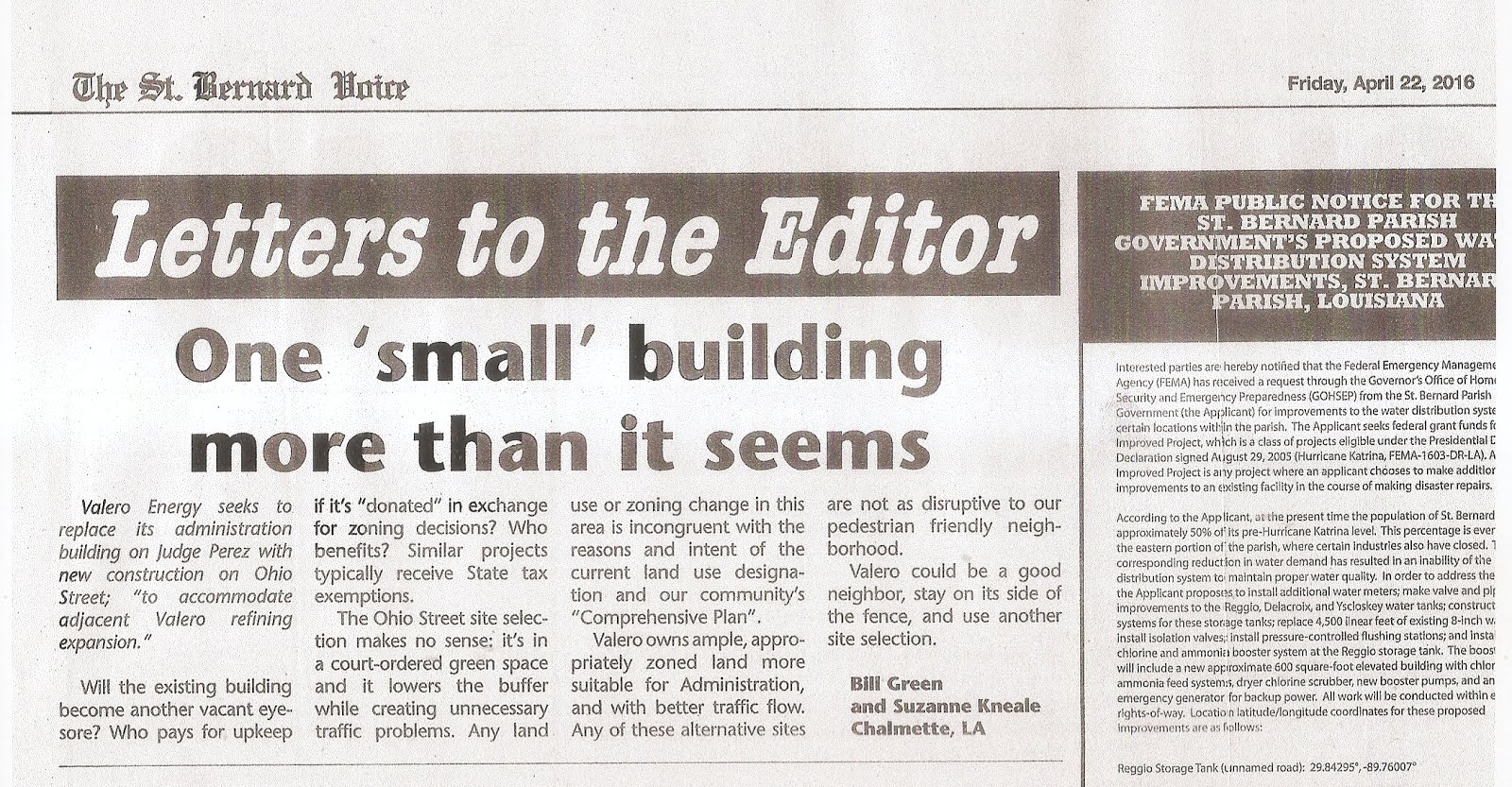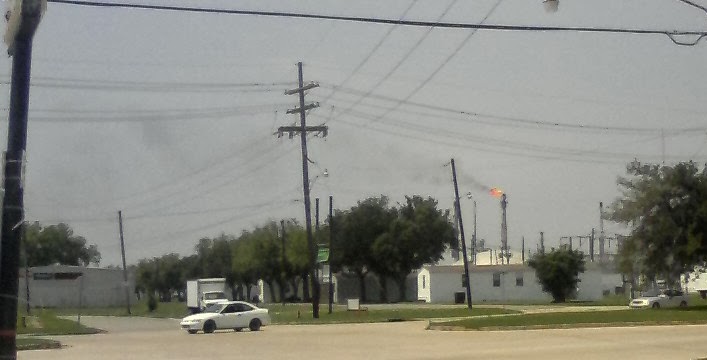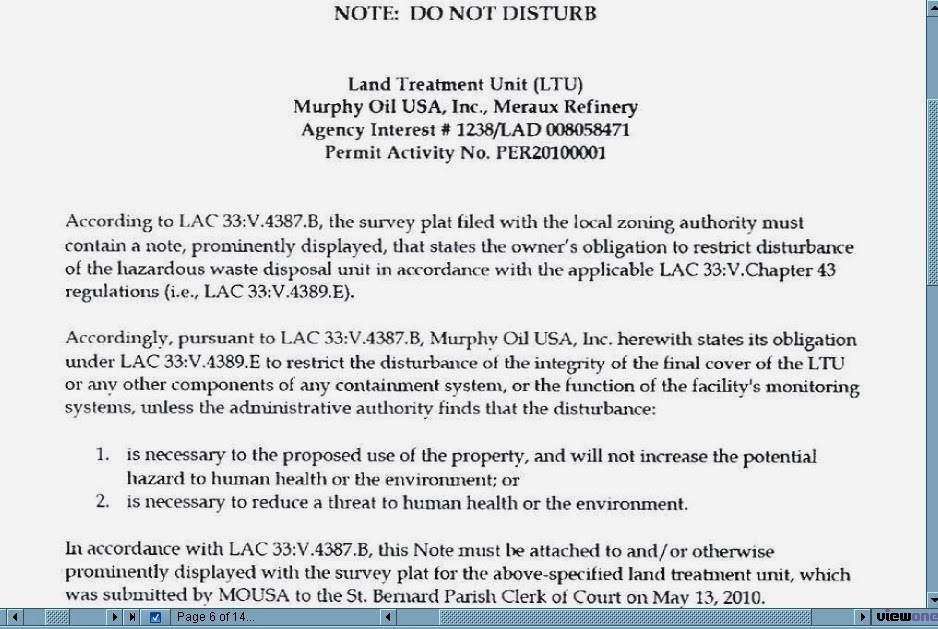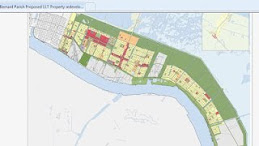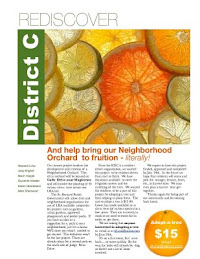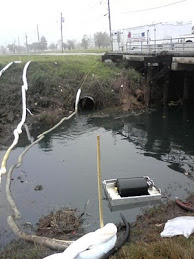Thursday, August 27, 2020
no where to hide
In the aftermath of a Category 4 hurricane, a fire at BioLab chemical plant causes a chlorine leak in Westlake, Louisiana, a community surrounded by petro-chemical facilities. Smoke and chemicals flowed over Interstate 10, which was closed. Residents were instructed to turn off the air conditioning if they had electricity, and shelter in place.
https://twitter.com/TheBradSowder/status/1298991534537203718
https://www.theadvertiser.com/story/news/2020/08/27/lake-charles-i-10-bridge-fire-chlorie-leak-sulphur/5644167002/
https://www.kplctv.com/2020/08/27/fire-chemical-plant-westlake/
Earlier this year, Mossville residents petitioned Louisiana DEQ to reject increased emissions from another facility. https://www.humanrightsnetwork.org/press/2020/2/18/concerned-citizens-of-mossville-and-university-network-for-human-rights-urge-louisiana-deq-to-reject-sasols-request-for-increase-in-toxic-emissions-from-lake-charles-facility
https://twitter.com/TheBradSowder/status/1298991534537203718
https://www.theadvertiser.com/story/news/2020/08/27/lake-charles-i-10-bridge-fire-chlorie-leak-sulphur/5644167002/
https://www.kplctv.com/2020/08/27/fire-chemical-plant-westlake/
Earlier this year, Mossville residents petitioned Louisiana DEQ to reject increased emissions from another facility. https://www.humanrightsnetwork.org/press/2020/2/18/concerned-citizens-of-mossville-and-university-network-for-human-rights-urge-louisiana-deq-to-reject-sasols-request-for-increase-in-toxic-emissions-from-lake-charles-facility
Monday, August 3, 2020
Property Tax Referendum
Early voting ends Saturday for a local referendum to decide the future of
drainage in St. Bernard Parish.
The election day is August 15th.
A yes vote provides for St. Bernard Parish Government to obtain, maintain and improve the pumping stations along the 40 arpent canal and about 60 miles of existing storm drainage canals.
A no vote retains the system "as is" with the Lake Borgne Basin Levee District [LBBLD] (aka Southeast Levee Protection Board).
There are two other property tax mills set to expire this year: The Hospital Service District 8 mills and a LBBLD 4.3 mills. Both will expire this year and are not being renewed. Should the 8 mills for Drainage pass, the property tax bills should remain the same.
St Bernard Parish Government recently settled lawsuits with the State agency(s) over maintaining and operating drainage assets . “This agreement allows for the flood authority to adequately maintain its hurricane protection responsibilities while enabling St. Bernard to assume responsibility for and properly fund its drainage system. https://www.nola.com/news/environment/article_bb8fcf38-a8c3-11e9-b73e-671bd5df0ebd.html
Sample Ballot:
The election day is August 15th.
A yes vote provides for St. Bernard Parish Government to obtain, maintain and improve the pumping stations along the 40 arpent canal and about 60 miles of existing storm drainage canals.
A no vote retains the system "as is" with the Lake Borgne Basin Levee District [LBBLD] (aka Southeast Levee Protection Board).
There are two other property tax mills set to expire this year: The Hospital Service District 8 mills and a LBBLD 4.3 mills. Both will expire this year and are not being renewed. Should the 8 mills for Drainage pass, the property tax bills should remain the same.
St Bernard Parish Government recently settled lawsuits with the State agency(s) over maintaining and operating drainage assets . “This agreement allows for the flood authority to adequately maintain its hurricane protection responsibilities while enabling St. Bernard to assume responsibility for and properly fund its drainage system. https://www.nola.com/news/environment/article_bb8fcf38-a8c3-11e9-b73e-671bd5df0ebd.html
Sample Ballot:
- Shall the Parish of St. Bernard, State of Louisiana (the "Parish"), levy a special tax of eight (8) mills on all property subject to taxation within the Parish (an estimated $3,053,300 reasonably expected at this time to be collected from the levy of the tax for an entire year), for a period of ten (10) years, beginning with the year 2021 and ending with the year 2030, for the purpose of acquiring, constructing, improving, operating and maintaining drainage canals, pumps, pumping plants, dykes, small levees and other drainage works, including all necessary equipment, within and for the Parish?
Saturday, August 1, 2020
Environmental Justice for All
Environmental Justice for All Act, introduced by U S Representative Grijalva
in February 2020:
H. R. 5986 : . "To restore, reaffirm, and reconcile
environmental justice and civil rights, provide for the establishment of the
Interagency Working Group on Environmental Justice Compliance and Enforcement,
and for other purposes.”
“It would
also require federal agencies to consider health effects that might compound
over time when making permitting decisions under the federal Clean Air and
Clean Water acts.”
U S Senator Kamala D. Harris is
joining Representative Grijalva, Representative McEachin, and dozens of congressional colleagues,
environmental justice groups, and community leaders in introducing the Environmental
Justice for All Act. https://www.harris.senate.gov/imo/media/doc/EJ%20for%20All%20Act%20-%201%20pager.pdf
Wednesday, July 1, 2020
its a problem for our health and environment
The rollback of regulations may be reversible, one day, but the toll on our health can not be.
Environmental rollbacks affect the world and the health of members of our most vulnerable communities.
Listen here On Point : NPR WBUR
https://www.wbur.org/onpoint/2020/07/01/environmental-regulations-under-attack-health
Friday, June 19, 2020
Taiwanese company attempts to block access to slave grave site
"A group of Black residents from St. James Parish, Louisiana, got the
green light on Thursday to hold an hour-long Juneteenth prayer service
on a burial plot containing the remains of formerly enslaved people. The
ceremony, planned for Friday, has been a point of contention — not due
to fears over coronavirus, which has hit the community particularly
hard, but because the site technically belongs to Taiwanese plastics
manufacturer Formosa." --- Rachel Ramirez article on grist https://grist.org/justice/juneteenth-formosa-st-james-parish-cancer-alley-black-burial-ground/
Stand with RISE St James
https://www.facebook.com/risestjames/
Stand with RISE St James
https://www.facebook.com/risestjames/
Sunday, May 17, 2020
past time for a different path
address to The Class of 2020 from a former POTUS
“No one does big things by themselves. Right now, when people are scared, it’s easy to be cynical and say let me just look out for myself, or my family, or people who look or think or pray like me. But if we’re going to get through these difficult times; if we’re going to create a world where everybody has the opportunity to find a job, and afford college; if we’re going to save the environment and defeat future pandemics, then we’re going to have to do it together. So be alive to one another’s struggles. Stand up for one another’s rights. Leave behind all the old ways of thinking that divide us — sexism, racial prejudice, status, greed — and set the world on a different path.”
“No one does big things by themselves. Right now, when people are scared, it’s easy to be cynical and say let me just look out for myself, or my family, or people who look or think or pray like me. But if we’re going to get through these difficult times; if we’re going to create a world where everybody has the opportunity to find a job, and afford college; if we’re going to save the environment and defeat future pandemics, then we’re going to have to do it together. So be alive to one another’s struggles. Stand up for one another’s rights. Leave behind all the old ways of thinking that divide us — sexism, racial prejudice, status, greed — and set the world on a different path.”
Friday, May 1, 2020
There is no wealth but our health
Here we go again, Louisiana. Another local council changes the land use plan allowing hazardous heavy industry incursion into neighborhoods and residential land use.
RISE St James Video Salt Louisiana Methane plant
RISE with St James Residents and Join them in objection to South Louisiana Methanol
Take Action !
Email Louisiana Department of Natural Resources
jay.pecot@la.gov AND matt.oneal@la.gov
CC: scott@healthygulf.org
Title: Objection to P20180767 P20191180
RISE St James Video Salt Louisiana Methane plant
RISE with St James Residents and Join them in objection to South Louisiana Methanol
Take Action !
Email Louisiana Department of Natural Resources
jay.pecot@la.gov AND matt.oneal@la.gov
CC: scott@healthygulf.org
Title: Objection to P20180767 P20191180
South Louisiana Methanol requires complex justification for
port and industrial site body: Save Our Park!
South Louisiana Methanol has not conducted an alternatives
analysis for wetland sites, nor a complex port and industrial justification.
South Louisiana Methanol cannot be permitted without these
environmental and economic analyses.
There is no need to eliminate the only park in District 5 St
James Parish Louisiana when a competing Methanol plant is being built a couple
miles away. South Louisiana Methanol has no economic justification given the
new economic changes and demand reduction of fossil fuels, in the short and
long term. South Louisiana Methanol must outline what business it will remove
from other methanol exporters in Louisiana, including the one next door. South
Louisiana Methanol must describe how it’s PM 2.5 and other pollution will
increase the death rate in St James. Otherwise, Louisiana cannot conduct a cost
benefit analysis of any sort. There is no wealth but our health.
South Louisiana must
conduct a hydrologic review to determine for how long and at what volumes fill
of these wetlands will block drainage to and within St James canal, which has
not been improved. St James is full! LDNR must hold a public hearing to
understand how South Louisiana Methanol and Formosa interact to block traffic
on Highway 18 and Highway 3127, eliminating DOTD evacuation routes completely
in the area.
Access to health care will be eliminated during this
pandemic should these permits proceed. Clean Water Act permits cannot be issued
until the government addresses these questions.
Labels:
RISE St James,
South Louisiana Methanol
Thursday, April 23, 2020
Earth Day 2020
Earth Day Celebration from The Old Farmer's Almanac
https://www.almanac.com/content/earth-day-date-activities-history
https://www.almanac.com/content/earth-day-date-activities-history
10 EARTH DAY ACTIVITIES AND IDEAS
Celebrate Earth Day by appreciating and respecting the natural world. Here are some ideas to inspire you!
- Support our native bees: The super-pollinators of the garden are … native bees! Learn more about these amazing heroes of pollination—and see how to make a native bee house (much like a bird house!). See how to make a bee-friendly garden habitat.
- Recycle and repurpose! Gardening needn’t be expensive. See ideas on recycling and repurposing garden items to make something out of nothing—and save money! We also have ideas on how to reuse in the kitchen and in the home and re-purpose everyday household items!
- Plant wildflowers! We’ll show you how to grow wildflowers in your garden for the pollinators—and to lift your spirits, too! Also, see our guide on choosing wildflower varieties which will thrive where you live.
- Reduce plastic dependency: Plastic permeates every aspect of our lives, including the garden. But as the world wakes up to its addiction, just how easy is it to ditch plastic while growing and storing more of our own food? See our ideas on how to garden without plastic. Don’t forget to recycle what plastic you can. See a Plastics Recycling Chart. And also, know what’s in all those bottled drinks!
- Go native! Plants thrive best when they’re natural to your area. See our article on native plant landscaping and 10 tips for an eco-friendly garden.
- Bring nature into the garden with plants that attract butterflies and plants that attract hummingbirds!
- Start an organic vegetable garden. Here are tips on organic seed-starting, and our Beginner’s Guide to Vegetable Gardening to get you started.
- Conserve water! See our tips for watering wisely in the garden and tips on how to create your own rain garden. Also, avoid over-watering. Know how much your garden really needs with our watering chart! Watch our video demonstrating 10 smart watering tips for a healthy garden garden.
- Plant more trees! Talk to your local government about planting more trees and native garden beds in public spaces, or consider planting your own on your property! See advice on how to plant a tree as well a our video demonstrating how to plant a fruit tree.
- Get kids involved! Pass down a love of nature and plants with kids. See our ideas on gardening with kids and also 6 simple kids’ planting activities from the Kids Almanac!
Find a ton of stay-at-home Earth Day ideas here: Celebrating Earth Day at Home
Wednesday, April 22, 2020
Fires & Explosions
A Western Easter weekend explosion with its over 11 hour fire and subsequent flaring by Valero Energy & an Orthodox Easter weekend fire and its 27 hours flaring by PBF Energy, released a lot more than nuisance odors...... Neither facility provides adequate real-time information for residents to know what they are being exposed to, for residents to determine if they should leave or stay. Disingenuous statements are not protective of human health.
The reported "nuisance" of 2/10 ppm Sulfur Dioxide is equivalent to 200 ppb SO2.
Sulfur dioxide acute exposure begins at 0.01 ppm or 10 ppb and the one-hour health standard is 75 ppb. Hardly a nuisance, more of a public health emergency effecting respiratory systems in human beings, and especially in children, elderly, and active healthy adults.
Article by Mark Schleifstein : Environment/Hurricane/Levee reporter for The Times-Picayune | The New Orleans Advocate; Co-author, Path of Destruction; Member, SEJ, IRE
https://www.nola.com/news/business/article_5c1634c2-8408-11ea-9e05-671699981e3a.html
The reported "nuisance" of 2/10 ppm Sulfur Dioxide is equivalent to 200 ppb SO2.
Sulfur dioxide acute exposure begins at 0.01 ppm or 10 ppb and the one-hour health standard is 75 ppb. Hardly a nuisance, more of a public health emergency effecting respiratory systems in human beings, and especially in children, elderly, and active healthy adults.
Article by Mark Schleifstein : Environment/Hurricane/Levee reporter for The Times-Picayune | The New Orleans Advocate; Co-author, Path of Destruction; Member, SEJ, IRE
https://www.nola.com/news/business/article_5c1634c2-8408-11ea-9e05-671699981e3a.html
Sunday, April 19, 2020
Sulfur dioxide is harmful
Sulfur dioxide is harmful. To report odors are only a nuisance is an understatement.
Sulfur Dioxide (SO2) is severely irritating to the eyes, mucous membranes, skin, and respiratory tract. Bronchospasm, pulmonary edema, pneumonitis, and acute airway obstruction can occur. Inhalation exposure to very low concentrations of sulfur dioxide can aggravate chronic pulmonary diseases, such as asthma and emphysema. (united States Center for Disease Control (CDC) )
Sulfur dioxide can cause breathing problems in healthy adults at concentrations as low as 10 ppb. Above 10 ppb concentration SO2 is where acute exposure begins. The EPA set a one-hour health standard for SO2 at 75 ppb.
There is no way to determine how much of what chemicals Orleans Parish residents were exposed to, including sulfates, hydrogen sulfide, and benzene. The wind last night carried emissions from PBF Energy's refinery's flare west into Orleans Parish, away from the sulfur dioxide air monitor in the nearby Chalmette Vista neighborhood. Even if PBF Energy were able to chase the odors across town into Orleans Parish, the technology of the commonly used hand held monitors typically do not register levels of SO2 until concentrations reach very high levels.
Public Health Statements from the CDC on Sulfur Dioxide reveal yet another disturbing health disparity:
According to the World Health Organization: Sulfur dioxide is a colourless gas that is readily soluble in water. Sulfuric acid is a strong acid that is formed from the reaction of sulfur trioxide gas (SO3) with water.
These sulfates (SO3) are said to be far more harmful than SO2.
" Sulfur dioxide causes irritation of the mucous membranes. This is probably the result of sulfurous acid forming when the highly soluble SO2 gas dissolves at the surface of the membranes. Groups that are especially susceptible to the harmful health effects of SO2 include children, the elderly, and people with heart or lung disorders such as asthma. When SO2 concentrations in the air become elevated, people in these sensitive groups and those who are active outdoors may have trouble breathing. Sulfur dioxide reacts with other gases and particles in the air to form sulfates, which also can be harmful to people and the environment. Sulfate particles are the major cause of reduced visibility in the ... United States: SO2 forms acids that fall to the earth in rain and snow. Better known as acid rain, this acidic precipitation can damage forests and crops, can make lakes and streams too acidic for fish, and can speed up the decay of building materials and paints."
http://njaqinow.net/App_Files/2017/SO2%202017.pdf
Lightening and other weather events happen. Plants can review their emergency shut down procedures and invest in technology to reduce emissions. Parish leaders should not spread disinformation about public health affects.
Sulfur Dioxide (SO2) is severely irritating to the eyes, mucous membranes, skin, and respiratory tract. Bronchospasm, pulmonary edema, pneumonitis, and acute airway obstruction can occur. Inhalation exposure to very low concentrations of sulfur dioxide can aggravate chronic pulmonary diseases, such as asthma and emphysema. (united States Center for Disease Control (CDC) )
Sulfur dioxide can cause breathing problems in healthy adults at concentrations as low as 10 ppb. Above 10 ppb concentration SO2 is where acute exposure begins. The EPA set a one-hour health standard for SO2 at 75 ppb.
There is no way to determine how much of what chemicals Orleans Parish residents were exposed to, including sulfates, hydrogen sulfide, and benzene. The wind last night carried emissions from PBF Energy's refinery's flare west into Orleans Parish, away from the sulfur dioxide air monitor in the nearby Chalmette Vista neighborhood. Even if PBF Energy were able to chase the odors across town into Orleans Parish, the technology of the commonly used hand held monitors typically do not register levels of SO2 until concentrations reach very high levels.
Public Health Statements from the CDC on Sulfur Dioxide reveal yet another disturbing health disparity:
It is known that exercising asthmatics are sensitive to low concentrations of sulfur dioxide Therefore, increased susceptibility is expected in children with asthma, but it is not known whether asthmatic children are more sensitive than asthmatic adults Additionally, asthma occurs most often in African Americans, children between the ages of 8 and 11, and people living in cities For unknown reasons, the death rates associated with asthma are also higher in non-Caucasian people Therefore, it is expected that asthmatic, African American children living in urban areas have increased sensitivity to sulfur dioxide.
There are numerous studies which concluded effects of sulfur dioxide are enhanced by simultaneous exposure to ultra-fine particles (PM2.5), and nitrates (NOx), and sulfates (SO3), all which were likely present during this event.
According to the World Health Organization: Sulfur dioxide is a colourless gas that is readily soluble in water. Sulfuric acid is a strong acid that is formed from the reaction of sulfur trioxide gas (SO3) with water.
These sulfates (SO3) are said to be far more harmful than SO2.
" Sulfur dioxide causes irritation of the mucous membranes. This is probably the result of sulfurous acid forming when the highly soluble SO2 gas dissolves at the surface of the membranes. Groups that are especially susceptible to the harmful health effects of SO2 include children, the elderly, and people with heart or lung disorders such as asthma. When SO2 concentrations in the air become elevated, people in these sensitive groups and those who are active outdoors may have trouble breathing. Sulfur dioxide reacts with other gases and particles in the air to form sulfates, which also can be harmful to people and the environment. Sulfate particles are the major cause of reduced visibility in the ... United States: SO2 forms acids that fall to the earth in rain and snow. Better known as acid rain, this acidic precipitation can damage forests and crops, can make lakes and streams too acidic for fish, and can speed up the decay of building materials and paints."
http://njaqinow.net/App_Files/2017/SO2%202017.pdf
Lightening and other weather events happen. Plants can review their emergency shut down procedures and invest in technology to reduce emissions. Parish leaders should not spread disinformation about public health affects.
Friday, March 27, 2020
EPA relaxes enforcement of clean air act
What we need now is more protection and not less. --- Anne Rolfes Louisiana Bucket Brigade
Our nation has a reduced need for fuel right now. To claim
we need boosted production during this crisis is manipulative. The Trump
administration has relaxed rules on enforcement and compliance in the
petrochemical industry, based on a letter from the API. This letter reportedly was drafted in 2019. The world powers of Russia and Saudi Arabia started
their price war before the Louisiana Stay at Home order. The value of the
products from the petrochemical plants were already diminished. Not complying
with the clean air act worsens the air quality, which greatly affects respiratory
health. Respiratory health is already under attack by the COVID19 pandemic.
These plants could step up, be a good neighbor, and adhere to the existing
regulations.
https://www.facebook.com/labucketbrigade/videos/2846969908730255/
Sunday, February 16, 2020
Property Tax Referendum
Property Tax Referendums under consideration
St Bernard Parish residents will vote in 2020 on additional,
new property taxes to fund storm drainage canals and pumps, which were formerly
funded under the Lake Borgne Basin Levee District (LBBLD) property tax (currently 11
mills for levees, drainage, and pumps).
It is unclear at this time if the referendum will simultaneously
reduce the 11 mills for LBBLD and add a
new property tax for SBPG’s new responsibility to operate and maintain drainage
canals and pumps. OR if the LBBLD will continue to collect 11 mills and SBPG collect a new additional tax.
Stay Tune for Updates and look for public hearings and
community meetings.
For a history of the LBBLD mileage and its decision to abandon
its responsibilities for canals and pumps see SBPG video from 2018 here ….. https://www.youtube.com/watch?time_continue=316&v=z6bAnrp_64E&feature=emb_logo
See below for a chart of current property tax mileages
Aside from the LBBLD 11 mills, residents of St Bernard Parish also pay property taxes to The St Bernard Port (3.72 mills). However, as a state
port, the properties within the port's jurisdiction do not pay a property tax. Recently, the Meraux Foundation and the Louisiana Economic Development proposed another tax exempt state port to be located near our Trist Middle School and operated by the Port of NOLA; the proposed plans include operation of a container
storage yard, including storage of plastic pellets. Increased rail and perhaps even the discontinuation of St Bernard Highway at that junction are among top concerns, which residents do not believe are worth the property tax exemption.
Total Industrial Tax Exemptions (ITE) in St Bernard Parish should
also be a consideration. District schools, law enforcement, fire stations,
roads and lighting, our rural hospital, recreation, library, and even garbage
collection are mainly funded through property tax. However, many of the heavy
industries in St Bernard Parish enjoy large property tax exemptions. Recent changes
to the state ITE program give local municipalities the option to not exempt
industry from local property tax. Of the few ITE applications since this change,
the SBP Council, Sheriff Department, School Board, and SBP Fire Department via
the Council, have all decided not to grant the exemptions. Given we have closed
fire stations and have a continued decreased domiciled-residential population
since 2005, this was a good budget decision. The local option began by executive
order of Governor John Bel Edwards in his first term. Whether or not the 2020 Republican
controlled Louisiana State Legislature will attempt to change this local option
remains to be seen. Yet, these industries still receive drainage and levee protection, and rely on our fire department for major incidents.
One thing St Bernard Parish residents can control is whether or not to continue
the current 11 mils for LBBLD and add an additional tax for the drainage and
pumps, or to reject such a referendum (if presented) and demand a different tax structure
(i.e., lower the LBBLD tax and simultaneously add the drainage and pump tax).
|
Parish Wide Mills
|
|||||||||||||||||||
|
Assessment District
|
1.86
|
||||||||||||||||||
|
Council on Aging Sr. Citizens
|
0.94
|
||||||||||||||||||
|
Fire District Parish Wide
|
20.41
|
||||||||||||||||||
|
Garbage District
|
3.05
|
||||||||||||||||||
|
General Alimony (general fund)
|
2.81
|
||||||||||||||||||
|
Health District
|
0.62
|
||||||||||||||||||
|
Hospital District
|
8.16
|
||||||||||||||||||
|
Lake Borgne Basin Levee District
|
11.33
|
||||||||||||||||||
|
Law Enforcement District
|
31.31
|
||||||||||||||||||
|
Library District
|
3.75
|
||||||||||||||||||
|
Port Harbor & Terminal
District
|
3.73
|
||||||||||||||||||
|
Recreation Facilities
|
2.17
|
||||||||||||||||||
|
Road District
|
3.05
|
||||||||||||||||||
|
Road Lighting District
|
1.22
|
||||||||||||||||||
|
School District
|
41.22
|
||||||||||||||||||
|
Wards
1 - 5A
Wards
5B - 7
| |||||||||||||||||||
Wednesday, February 12, 2020
benzene levels & federal intervention
EPA should develop a national ambient air standard for Benzene. Louisiana's benzene standard is more than twice as lenient as the Texas standard, which is over 30 times looser than that of Massachusetts. Without a National Ambient Air Standard for Benzene, States will continue to enforce different standards in different ways. St Bernard Parish residents deserve the most protective standards resulting in the least amount of exposure; not more.
Benzene is like asbestos, there is no safe exposure level, and chronic airborne benzene exposure is associated with leukaemia and other health affects.
According to the World Health Organization: "Benzene is carcinogenic to humans, and no safe level of exposure can be recommended. For general guidance, the concentrations of airborne benzene associated with an excess lifetime risk of leukaemia of 10−4 , 10−5 and 10−6 are 17, 1.7 and 0.17 μg/m3 , respectively."
https://www.who.int/ipcs/features/benzene.pdf
The EPA now requires benzene fenceline monitoring in the oil refinery sector, but not around other benzene emitting plants. When the 2 week adjusted average is above 9 ug/m3, the oil refinery must file an additional report and conduct root cause analysis and take action to reduce the benzene level. However, this is looking more like another fox watching the hen house project.
Residents and grassroots stakeholders like Louisiana Bucket Brigade and Environmental Integrity Project wanted public access to the real time data, and not just the two week "adjusted" averages.
Benzene is like asbestos, there is no safe exposure level, and chronic airborne benzene exposure is associated with leukaemia and other health affects.
According to the World Health Organization: "Benzene is carcinogenic to humans, and no safe level of exposure can be recommended. For general guidance, the concentrations of airborne benzene associated with an excess lifetime risk of leukaemia of 10−4 , 10−5 and 10−6 are 17, 1.7 and 0.17 μg/m3 , respectively."
https://www.who.int/ipcs/features/benzene.pdf
The EPA now requires benzene fenceline monitoring in the oil refinery sector, but not around other benzene emitting plants. When the 2 week adjusted average is above 9 ug/m3, the oil refinery must file an additional report and conduct root cause analysis and take action to reduce the benzene level. However, this is looking more like another fox watching the hen house project.
Residents and grassroots stakeholders like Louisiana Bucket Brigade and Environmental Integrity Project wanted public access to the real time data, and not just the two week "adjusted" averages.
According to this EIP article,"Anne Rolfes, Director of the Louisiana Bucket Brigade, an environmental advocacy group, complained that the people of Chalmette, Louisiana, are being exposed to benzene from the Chalmette Refining plant at dangerous levels. The benzene concentration detected along the refinery fenceline in 2019 was 37 percent higher than EPA action levels.
“It should not require a federal intervention for Chalmette Refining to take action on a cancer causing chemical like benzene,” Rolfes said. “Chalmette Refining’s reckless release of benzene threatens the people who live in the neighborhood right across the street, and a school that is less than a mile away.”
EPA’s benzene regulations have their origin in a 2012 lawsuit that the Environmental Integrity Project (EIP) and allies filed on behalf of seven community and environmental groups, including Air Alliance Houston and the Louisiana Bucket Brigade. The lawsuit complained that EPA missed its deadline to review and update toxic air standards for oil refineries by more than a decade.
For years, these local groups had been fighting for stronger protection from refinery pollution, including problems associated with flaring and malfunctions. In response, EPA imposed new regulations for oil refineries designed to reduce the amount of hazardous pollution these companies spew into the air. The new rules, first implemented in 2018, require refineries to set up monitors around the perimeter of their plants to measure concentrations of benzene leaving the property.
As part of the monitoring requirement, refineries must collect air samples at the plant fenceline every two weeks. Refineries then determine the amount of benzene actually coming from the facility by correcting for background or any nearby or offsite sources. If the highest measurement of benzene coming from the facility exceeds an average of 9 micrograms per cubic meter of air over a one-year period, the EPA regulations require the facility to conduct an analysis to determine the root cause of the problems causing the toxic emissions and to then take action to lower those concentrations.
Subscribe to:
Posts (Atom)




